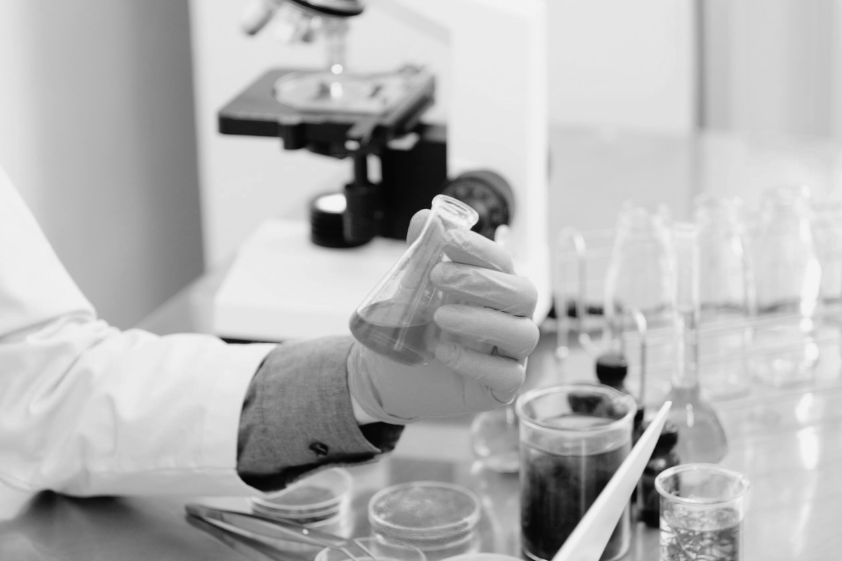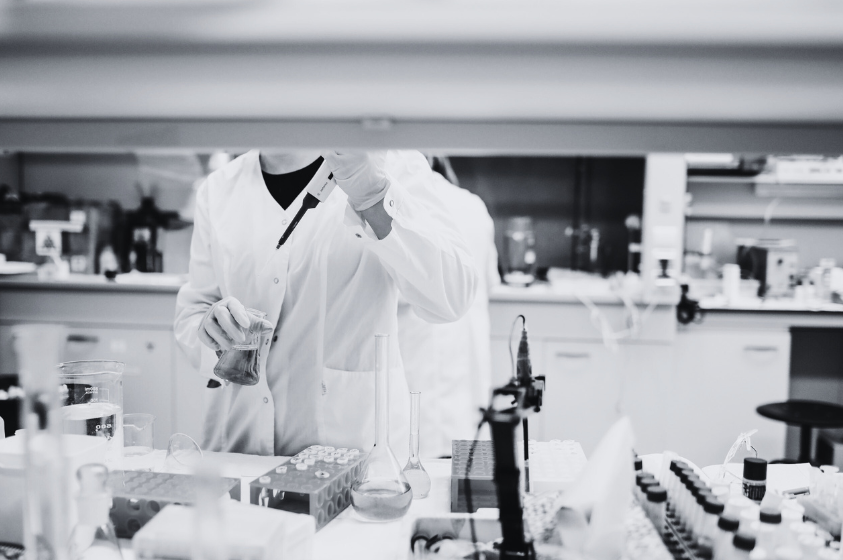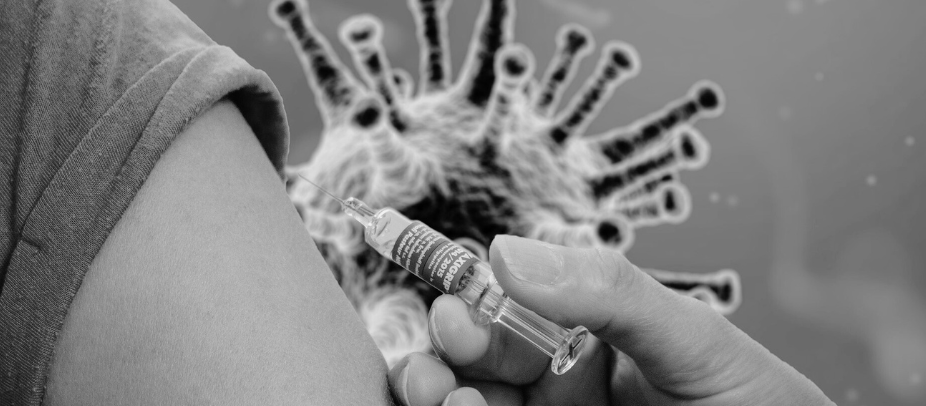
PART 4 in a series of blogs navigating the issues around vaccinations.
Some medical research, including the development of some vaccines, uses human ‘cell lines’. The benefit of using human cell lines is that they are not contaminated by animal cells and viruses, and better suited for human viruses. The cell lines come from cells obtained from human tissue samples and grown in laboratories through repeated cell division. Some cell lines were created from tissue obtained from aborted fetuses. Fetal tissue was selected because its cells undergo many more divisions over time than adult cells, and therefore become more predictable as well as being available for use over a longer time. The tissue obtained from an organ of a fetus is broken into individual cells. The cells of interest are collected and allowed to self-replicate before becoming a cell line for research. Through this process the cell line created is purified so that it consists of only one type of cell, all of which are identical in structure. These cells most often lose much of their similarity to the cells originally obtained from the organ or tissue sample. Usually these cells can divide a finite number of times before they stop dividing or stop producing normal cells. In some cases, the cells may undergo a mutation (change) or be manipulated in the lab to allow the cells to divide ‘infinitely’. Because these cells are able to multiply many times without changing, their behaviour is predictable and the biological products they produce become consistent and safer.
There are different types of vaccines but the idea behind how they work is essentially the same. The vaccine introduces either the whole virus or parts of the virus in an inactive or less active form into the body. Once the body recognises the virus, it produces antibodies to the virus and also keeps a record of the antibodies for future encounters with the virus. Viruses, unlike most other microbes, need a host cell to live in and multiply. One approach to vaccine development therefore is to grow the virus in human cell cultures. As the virus grows and multiplies in the cell culture, it destroys the cells. The virus is extracted from the cell culture and purified to remove any other content and is then used to make the vaccine. This process means that vaccines grown in human cell cultures have a distant association to the original human tissue from which the cell lines were initially made. It is important to note that there are many vaccines that do not use fetal cell lines.
Most of the cell lines from aborted fetuses which have been used to develop vaccines were established decades ago. The cell line known as WI-38 is from a female, aborted in 1962 in Sweden because her mother already had several children and an unsupportive spouse; the other, MRC-5, is a male aborted in 1966 in the United Kingdom because the mother suffered from a psychiatric disorder due to the pregnancy. For these cell lines, it is clear that the mother did not have any knowledge that the fetal cells were taken, used or commercialised (we discuss more about this in our subsequent blogs). Vaccines that are cultured in these abortion-derived human cell lines are Varivax for varicella (chicken pox); Meruvax II and MMR II for mumps, measles and rubella (German measles); Havrix and VAQTA for hepatitis A; Twinrix for hepatitis A & B; and Imovax for rabies.
There are other abortion-derived human cell lines used in medical research, including in the development of new vaccines, and for gene therapy. At present, these include HEK-293, PER.C6, and WI-26. In the current search for a vaccine for SARS-CoV2 (COVID-19), several of the most promising candidates include the vaccine from Oxford/AstraZeneca that is being developed in the abortion-derived human cell lines HEK-293 or PER.C6. The cell line HEK-293 was established in 1972 from the kidney obtained at post-mortem from an elective abortion, while PER.C6 is a Johnson & Johnson proprietary cell line created from retinal cells obtained from an elective abortion in 1985.
Most recently in 2015, a new abortion-derived cell line, called Walvax-2 was created in China. The impetus for its creation was a concern that the cell lines established in the 1960s and 70s could exhaust their ability to multiply, and that access to the cell lines may be limited to Chinese researchers. Walvax-2 has raised some ethical concerns with regard to the level of influence applied to the actual abortion procedure. It is worth noting here that because of the novel technologies developing in the area of vaccine discovery, there is unlikely to be a need to establish new abortion-derived cell lines for this purpose.
A larger number of vaccines are normally produced without using abortion‐derived human cell cultures. Among these are vaccines for anthrax, diphtheria, tetanus, pertussis, haemophilus B, hepatitis B, influenza, meningococcal meningitis, pneumococcal pneumonia, tetanus, typhoid, and yellow fever. There are also alternative vaccines that don’t use abortion-derived human cell lines available for mumps, measles and rabies (these are Mumpsvax, Attenuvax and RavAvert, respectively).
This raises important questions: Is it moral to use vaccines once derived from aborted fetuses? Does the use of these vaccines show co-operation with the act of abortion?
Before going any further, we need to be clear that a Christian view will not condone the destruction of human embryos and fetuses. In God’s authoritative word, the Bible, he puts a clear protection around human life, including unborn children. This is because all humans are made in God’s image. You can read more about this in the Gospel, Society and Culture paper on Abortion
The question of the moral acceptability, or otherwise, of using vaccines developed in abortion-derived cell lines is complex. When we are thinking about the permissibility of these vaccines we need to consider intent, compliance with abortion, and beneficience.
The main argument against the use of these vaccines is that they are derived from the immoral and unethical act of abortion and therefore they cannot be supported or used. Even though the connection with the original fetal tissue is distant, the use of these vaccines raises conscientious objections for some people. We must respect this conscientious objection. When someone comes to the conclusion that they cannot in good conscience accept such a vaccine, there should be no pressure on them to do so.
There is a counter argument however, which recognises that the act of abortion is wrong, but makes the case that it can be permissible to accept vaccines developed from abortion-derived human cell lines. The three cell lines related to vaccine development come from the fetal tissue obtained from abortions that were performed for other unrelated reasons. The abortions were not conducted in order to provide tissues for cell lines. The reasoning here is that the intention of the abortion was not specifically to create the cell lines. The abortions would have taken place irrespective of whether the tissue was later used to create a human cell line. (For this reason, the Chinese cell line Walvax-2 may fall into a different moral category).
This does not justify the initial abortions, those actions are still wrong. But the cells now derived from those few abortions are used to bring considerable good through vaccine development (read more here).
This argument recognises that life is always ethically complex. Almost every product we purchase, for instance, has some element in the supply chain about which there are serious ethical questions. In some cases, people who are concerned about these issues might refuse to purchase them. In other cases we might use the product and at the same time campaign for the development of an alternative product. The complicating factor with vaccines is that receiving a vaccine serves the common good and not simply the person who receives it.
In the case of COVID-19 vaccines, no one yet knows which vaccines candidates will be successful. It may be that there will be vaccines available which have not developed using fetal cells. If it turns out that the only options available are those which have used fetal cells, receiving that vaccine is not inconsistent with opposition to abortion.
A similar argument is often made about the progress of medical discovery that resulted from unethical practices during WWII. This view is further supported by bioethicists who argue that abortion is unethical, but the acts in question are long past. The cell lines are decades old, and a decision not to use the vaccines developed from them poses a greater risk to the community. These bioethicists argue that there are more significant ways in which the present practice of abortion can be opposed. This view was supported by the Vatican in its 2005 declaration ‘Moral Reflections on Vaccines Prepared from Cells derived from aborted Human Fetus’ and reaffirmed in 2017.
While Christians may be willing to receive these vaccines, this discussion should alert us to a far wider and greater concern. Medical research and therapy makes extensive use of fetal material and cell lines. A 2016 report indicated that in the US fetal tissue from abortions is used to study HIV/AIDS; embryo and fetal development; eye development and disease; infectious diseases and conditions such as type 1 diabetes and diseases and congenital conditions of which develop in utero. Embryos are also used in research which supports IVF and in genetic research. Recently the US federal government ended funding for the creation of new embryonic cell lines. However, researchers continue to obtain privately funded cell lines. It would be naive to think that research using aborted human fetuses or embryos is not occuring in Australia. Arguably, this is one of the areas in Australia that remains a grey area in terms of legislation and national ethical guidelines. Given the speed of development of biotechnology research, there is a real need for Australian Christians to be informed about research and to advocate for ethical limits which protect and respect unborn human life.
*The author Nalini Pather is a senior academic in medical sciences at the University of NSW. She holds a doctoral degree in cell biology and additional postgraduate qualifications in clinical anatomy, and university learning and teaching. Her areas of research include applied anatomy and medical imaging, medical education and ethics. Nalini serves on the Gospel, Society and Culture committee.

READ BLOG 1 IN THE SERIES HERE

READ BLOG 2 OF THE SERIES HERE

READ BLOG 3 OF THE SERIES HERE

READ BLOG 5 IN THE SERIES HERE

